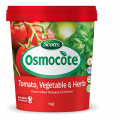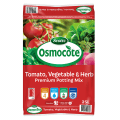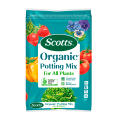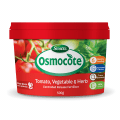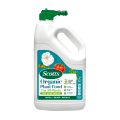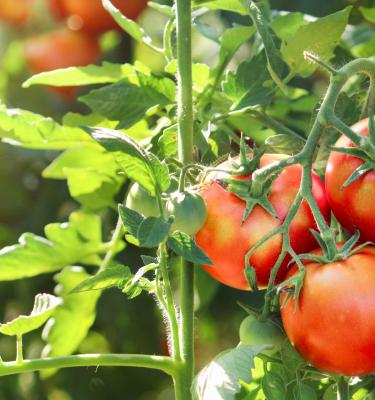

How to Grow Tomatoes
Nothing beats the taste of your own home-grown tomatoes, freshly picked and warm from the summer sun. Slice them into a summer salad, use them as pizza toppings or add some depth to spaghetti bolognese.
While different areas of the country require different growing approaches, tomatoes are versatile and adaptable to different climates, soil types, and settings. Tomatoes thrive in sunny gardens or, if you live in a colder climate, can be grown indoors (provided they get enough sunlight).
So, whether you're growing tomatoes in garden beds, pots or hanging baskets, we've got you covered with our expert recommendations on the best way to grow tomatoes at home.
Harvesting tomatoes
Tomatoes should be harvested when the fruit is ripe and fully coloured.
How to identify ripe tomatoes
- Check the tomato seed packet or plant tag as this will provide information on the colour and hue of a ripe tomato.
- Ripe tomatoes have a distinctly fresh aroma that can easily be identified.
- Gently squeeze the tomato - ripe tomatoes will feel slightly soft.
Can you ripen tomatoes off the plant?
As temperatures drop in autumn, tomatoes will eventually stop ripening on the plants. However, you can still ripen them indoors. Cut off all remaining tomatoes and place them indoors in a paper bag together with a banana or an apple. These fruits give off a gas called ethylene which encourages the tomatoes to ripen. The process takes about two weeks. Check the bag periodically and remove tomatoes as they ripen. Those that don’t ripen can always be used to make green tomato pickles!
Companion planting for tomatoes
Companion planting is a great way to improve the health, yield, and pest resistance of your tomato plants. Here are some of our top recommendations for companion plants for tomatoes:
- Basil: Repels aphids and whiteflies and enhances the flavour of tomatoes
- Marigolds: Repels aphids and whiteflies and attracts bees for pollination
- Carrots: Can be grown under tomato plants and helps to loosen the soil around the tomato plant’s roots
- Parsley: Attracts insects, like ladybugs, that prey on common tomato pests
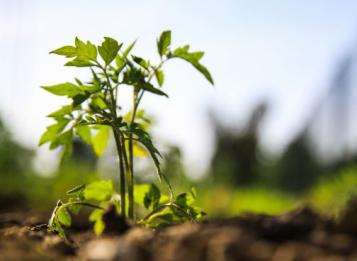
Looking after tomatoes
Once your tomato plant is established, there are a few things you can do to encourage a plentiful harvest.
Supporting and staking tomato plants
As plants grow, tie the main stems to stakes for support and remove the small side shoots that appear in the angles between the side stems and the main stem. Once five trusses (side stems bearing leaves and fruit) have developed, pinch off the growing tip at the top of the main stem. This will focus the plant's energy on producing more fruit.
For smaller tomato bushes, there's no need to remove side shoots or pinch out growing tips. However, you may need to support heavily laden branches with stakes.
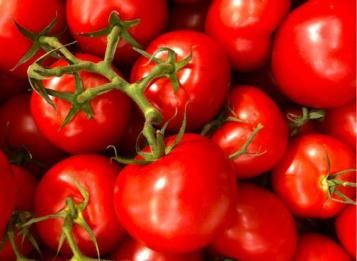
Watering tomatoes
Tomato plants require regular watering and feeding to produce healthy fruits. When watering tomato plants, the soil should be kept moist enough for moisture to reach the roots. Refrain from overwatering as too much water can deprive the roots of oxygen.
Feeding tomatoes
Proper feeding is critical for growing healthy and bountiful tomato plants. Feeding young tomato plants requires care as it is quite easy to overfeed and damage their sensitive roots. Young tomato plants should be fed as soon as they are transplanted using half the recommended application rate or dilution ratio indicated on the package. If a tomato fertiliser was added to the soil before planting, further feeding may not be needed until plants begin to fruit.
Once the plant begins to fruit, fertilise every 4 to 6 weeks with a balanced fertiliser that contains nitrogen, phosphorus and potassium. Fertilise one last time when you harvest your first fruit.
9 Expert tips for planting tomatoes
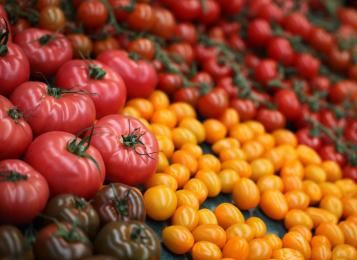
1. Select the right type of tomato for your space and preferences
Depending on your preference and space, select the right tomato variety. For salads, opt for cherry or grape tomatoes. For sauces, ‘Roma’ is ideal, and for big juicy tomatoes, try ‘Big Boy’ or ‘Beefsteak’.
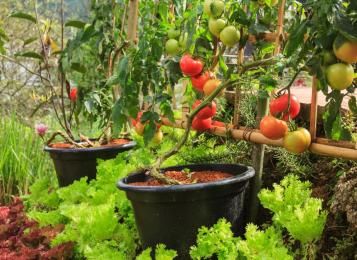
2. Have the right equipment for growing tomatoes
For planting, you'll need pots for sowing seeds, larger pots for growth until harvest, and stakes and ties for supporting heavy plants.
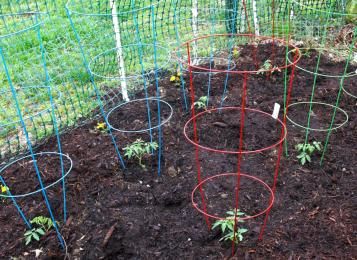
3. Support your tomato plant with stakes or a tomato cage
Many tomato varieties need to be staked to avoid the plant toppling over. If your tomato plants need support, tie it to a stake or tomato cage. As your tomato plant grows, tie the main stems to stakes and remove small side shoots.

4. Ensure your tomato plant gets enough sunlight or use a greenhouse
In cooler areas, consider using greenhouses to extend the tomato season. Otherwise, tomatoes thrive in spots with at least six hours of sunlight daily and protection from strong winds.
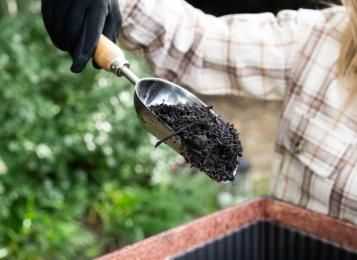
5. Prepare the soil for growing tomatoes
The quality of your potting soil is critical for growing healthy tomatoes. Tomatoes grow best in rich, fertile, well-drained soil. Use Scotts Osmocote Compost Premium Soil Improver and Scotts Osmocote Controlled Release Fertiliser: Tomato, Vegetable & Herb to prepare your soil for growing tomatoes.
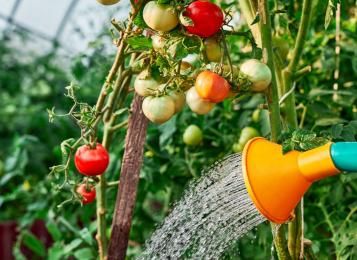
6. Water regularly
Regular watering without over-saturating is key. Consider installing an automatic irrigation system. If this is not an option, water in the morning and try to avoid wetting the foliage.
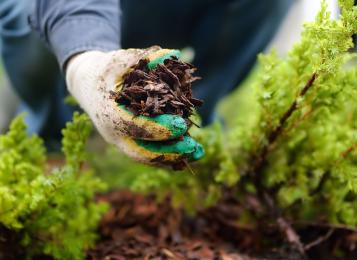
7. Add mulch
Add straw mulch on top of your soil to retain moisture and prevent weeds.
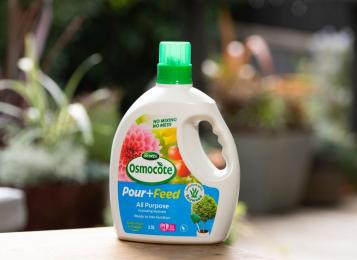
8. Feed regularly but avoid over-fertilisation
You’ll need liquid fertiliser and controlled-release fertiliser. Feed young plants gently, avoiding over-fertilisation. Apply a liquid fertiliser to tomato seedlings to improve their frost tolerance while young.
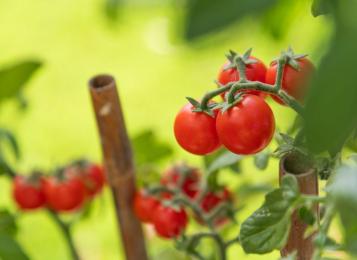
9. Know when your tomatoes are ripe and ready to harvest
Pick tomatoes when they are ripe and fully coloured. Ripe tomatoes have a distinct aroma and are slightly soft to the touch. In cooler autumn temperatures, you can ripen them indoors alongside a banana or apple to expedite the process.
Frequently asked questions about growing tomatoes
What season do tomatoes grow in?
Tomatoes grow best in summer but should be planted in spring. In tropical climates, tomatoes can be grown year-round.
Are tomatoes annuals?
Tomato plants are usually grown as annuals, meaning they’ll have just one growing season and will die off after fruiting.
When is the best time to plant tomatoes?
In temperate regions of Australia, planting tomatoes in early spring is ideal, ensuring they are transplanted outdoors after the last frost. In cooler climates, starting seeds indoors or in a greenhouse until it’s warm enough to plant in the garden can give plants a head start. However, in warmer regions, planting can extend from late winter through spring.
What is the best soil for tomatoes?
The best soil for tomatoes is rich, fertile, well-drained soil with a soil pH between 6.5-6.7.
What should you feed tomatoes when fruiting?
When your tomato plant starts to fruit, feed it with a balanced fertiliser that contains nitrogen, phosphorus and potassium.
How do you know when a tomato is ripe?
To know when a tomato is ripe, give it a gentle squeeze and smell the fruit. Ripe tomatoes have a fresh aroma and are slightly soft to the touch.
When to plant tomato seeds
Plant tomato seeds in early spring.
When to transplant tomato seedlings
Transplant tomato seedlings in mid to late spring. Wait until daytime temperatures are in the mid-20s and there’s no risk of night-time frost.
